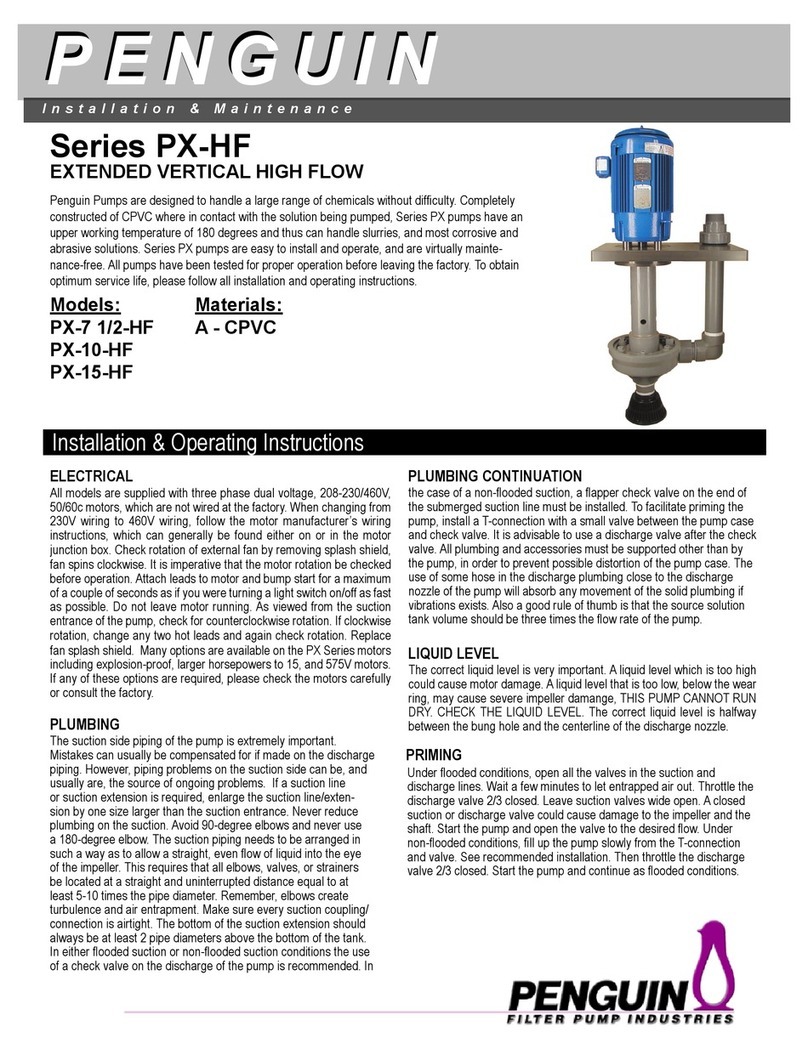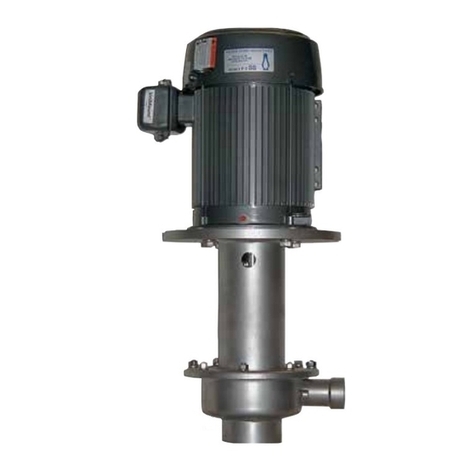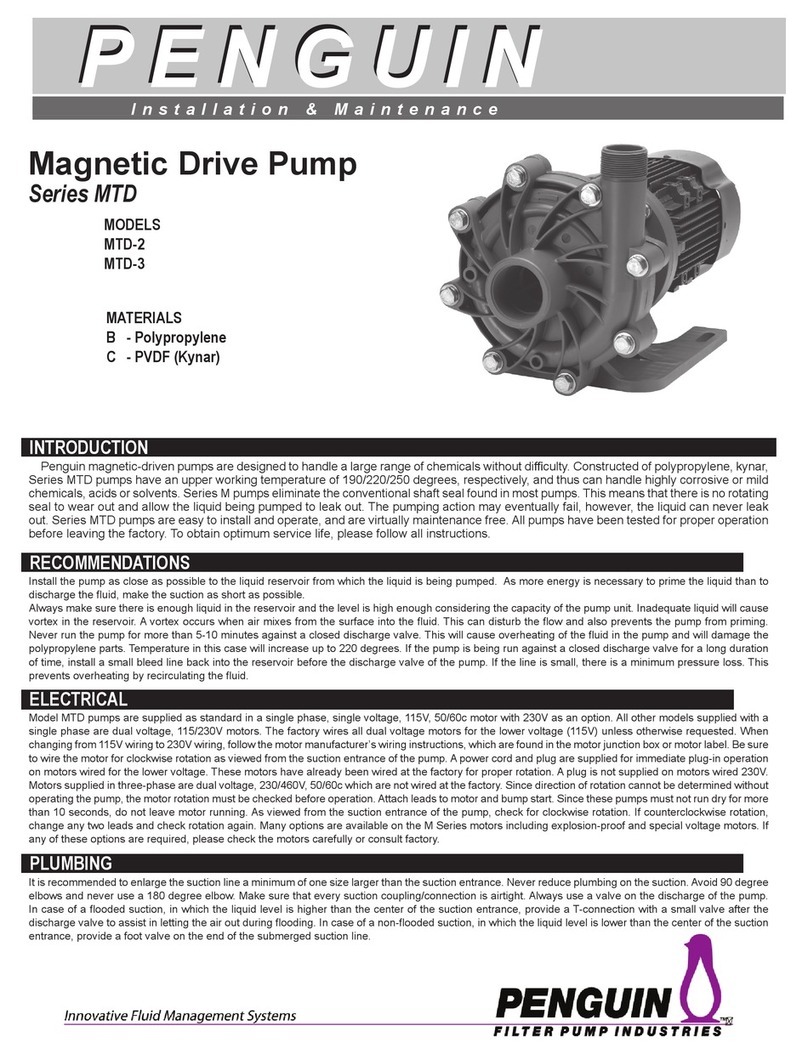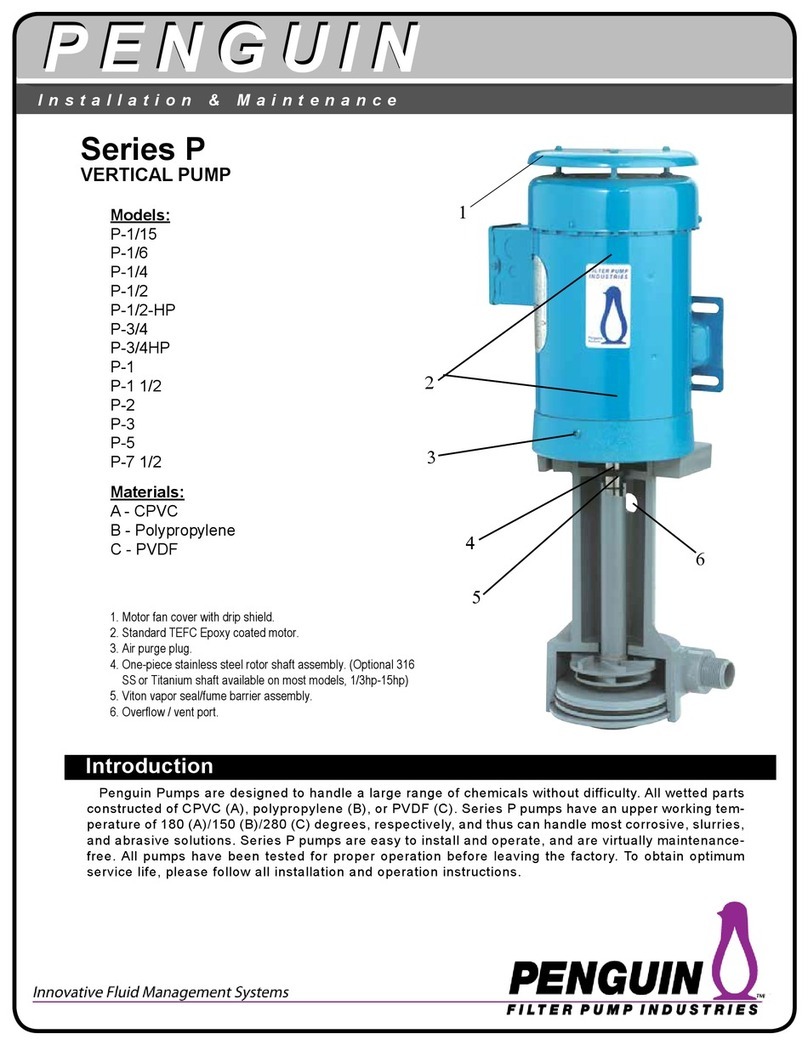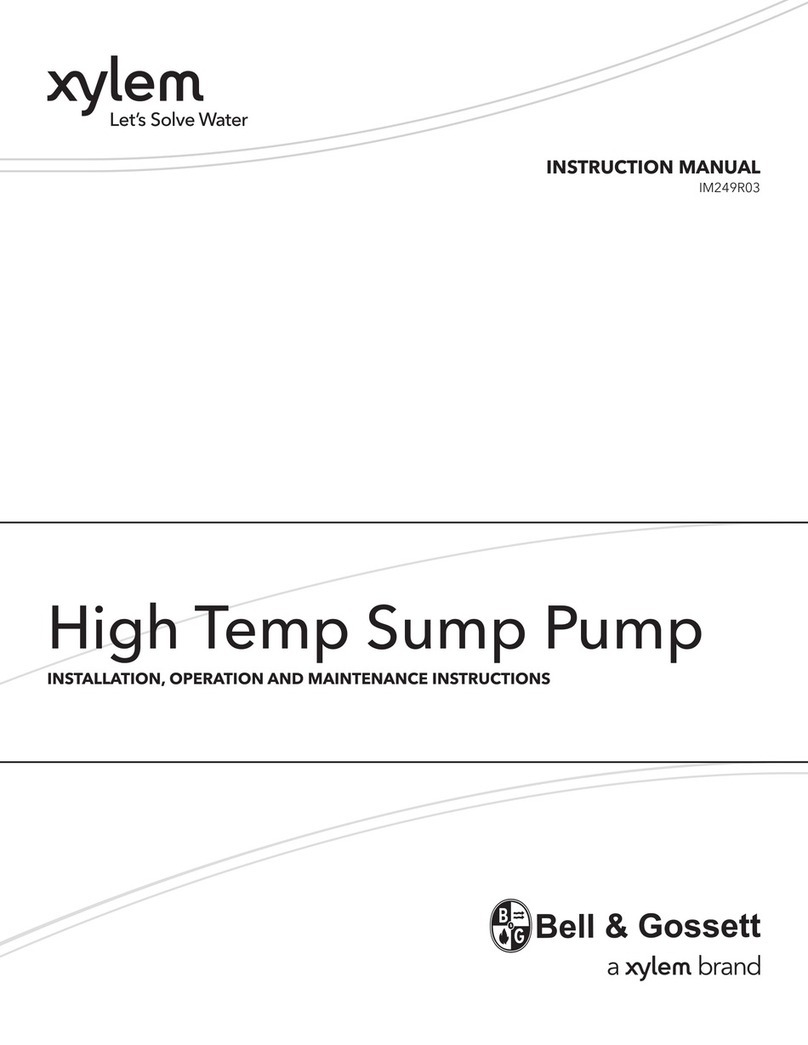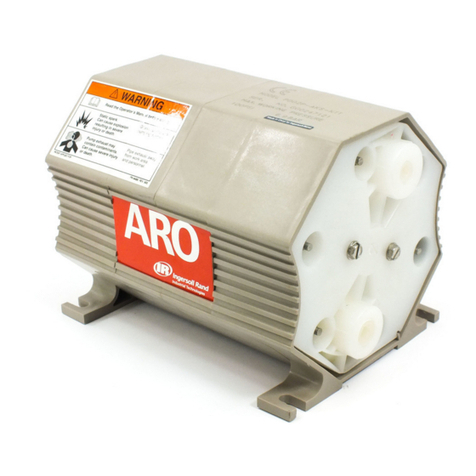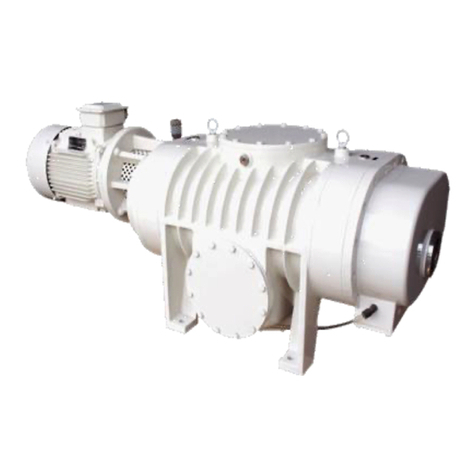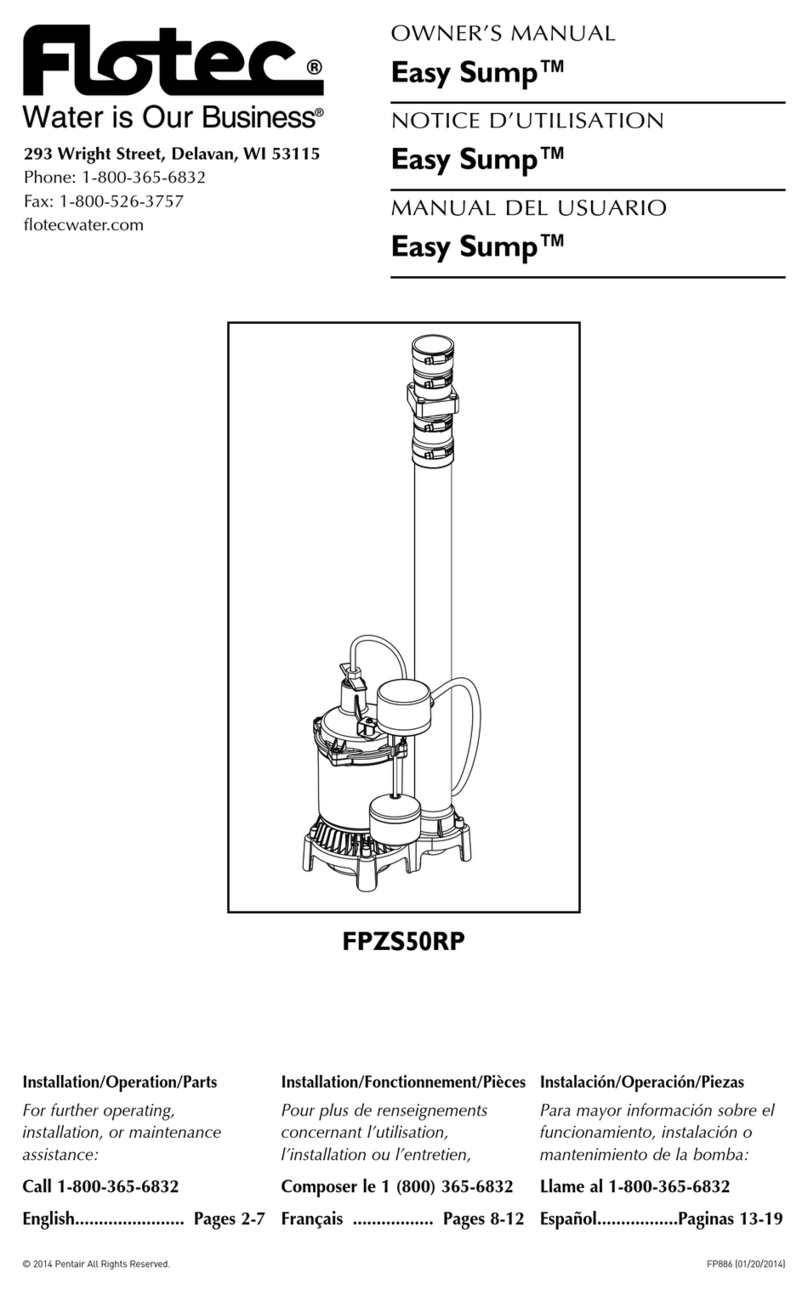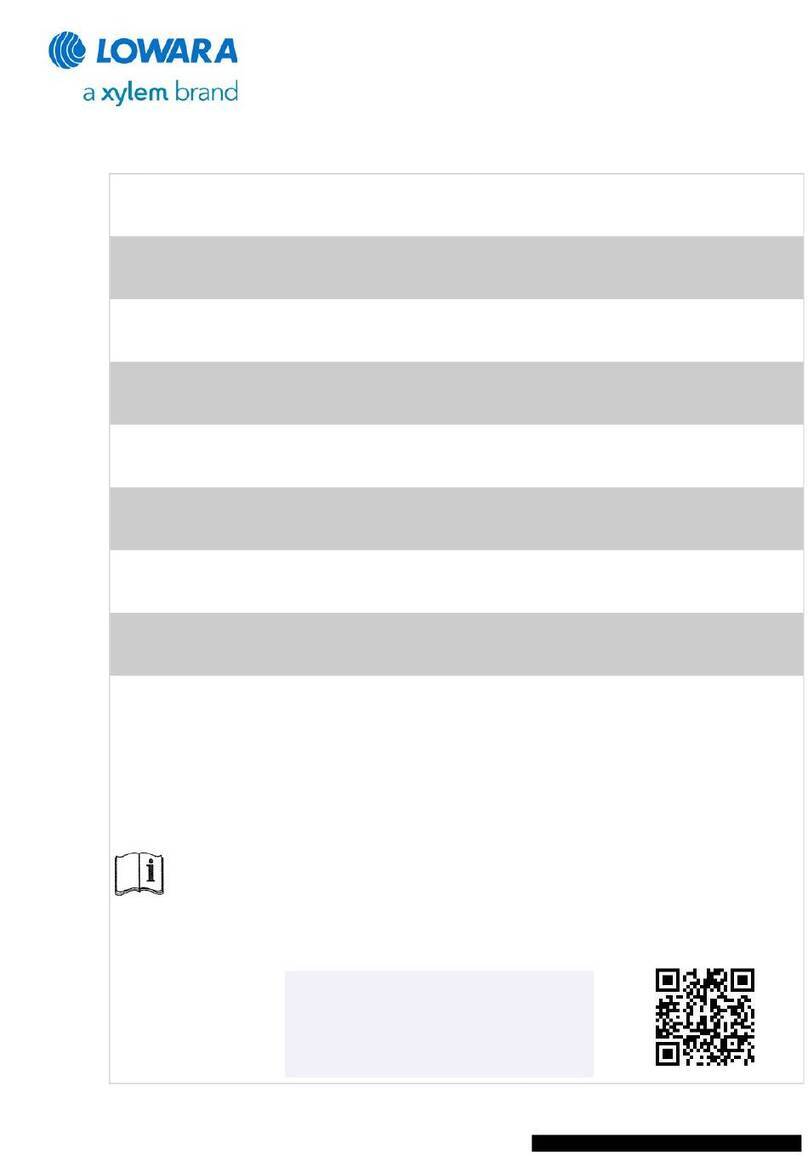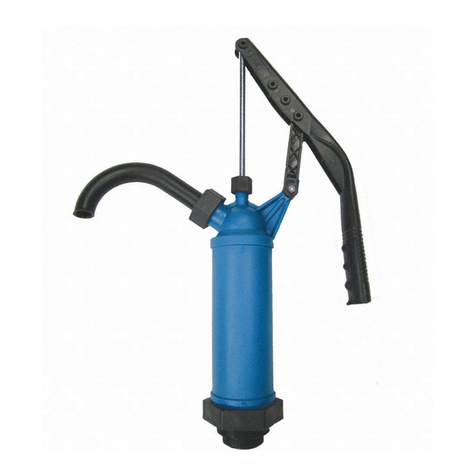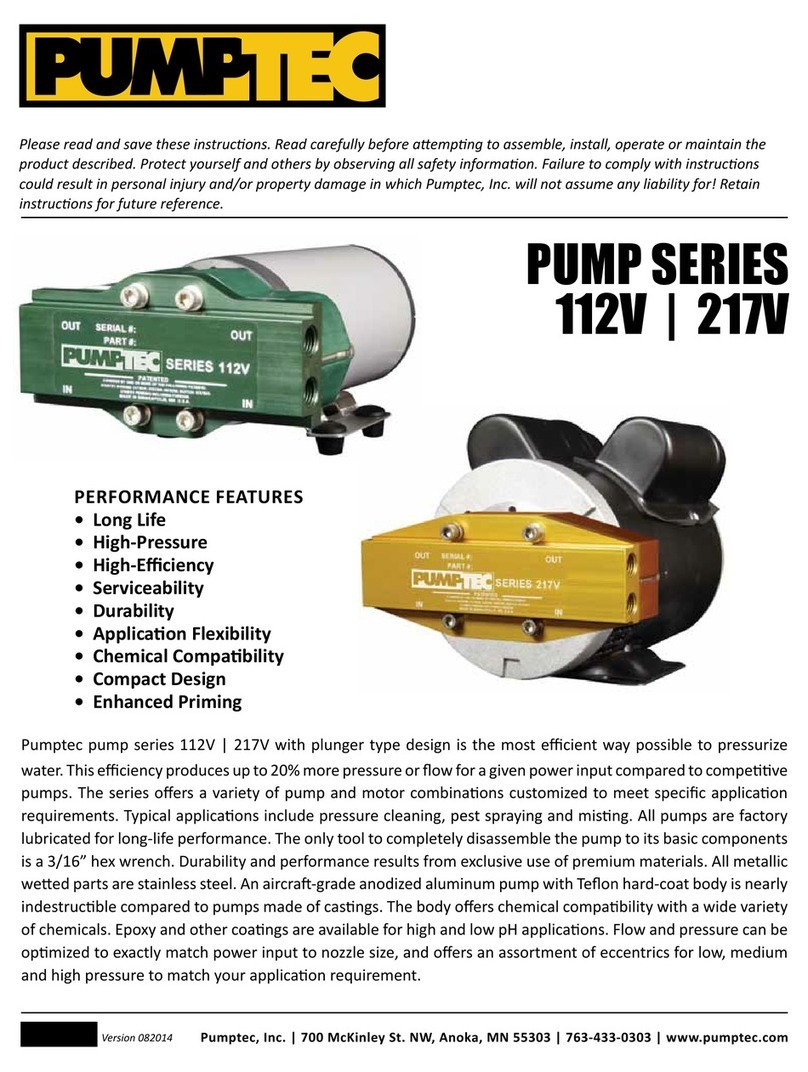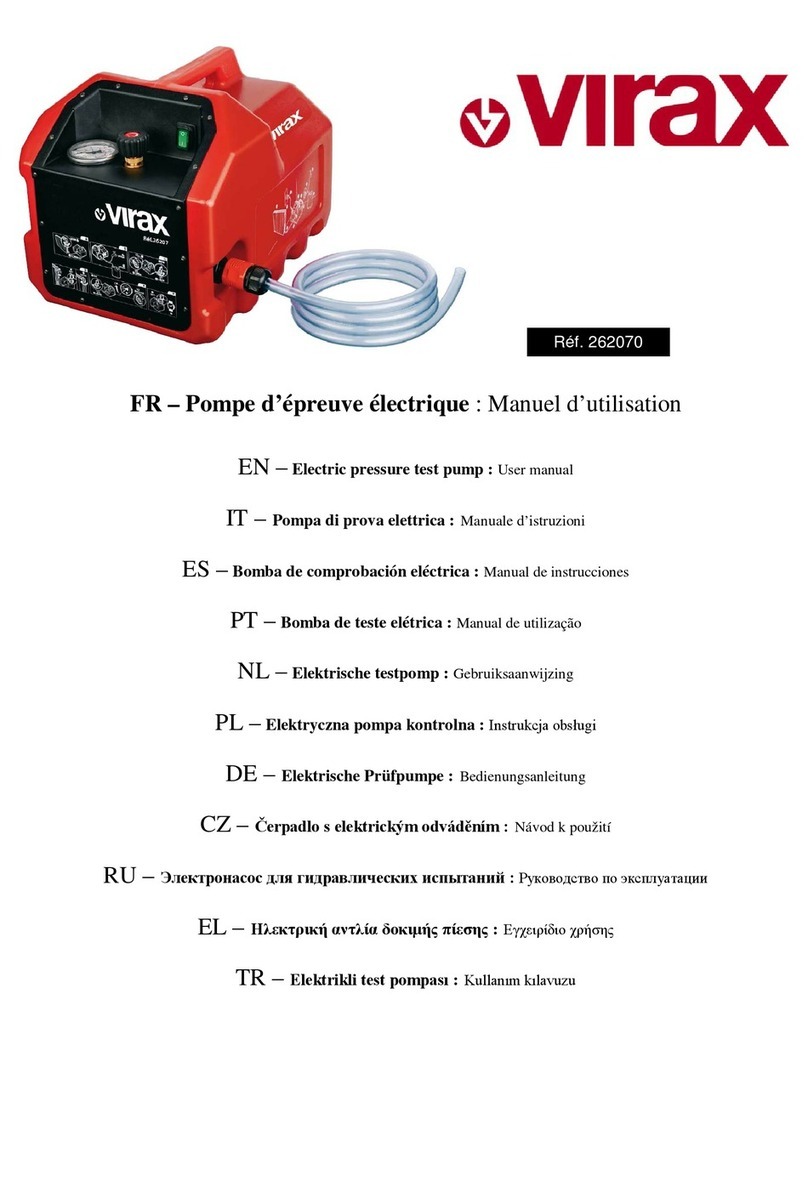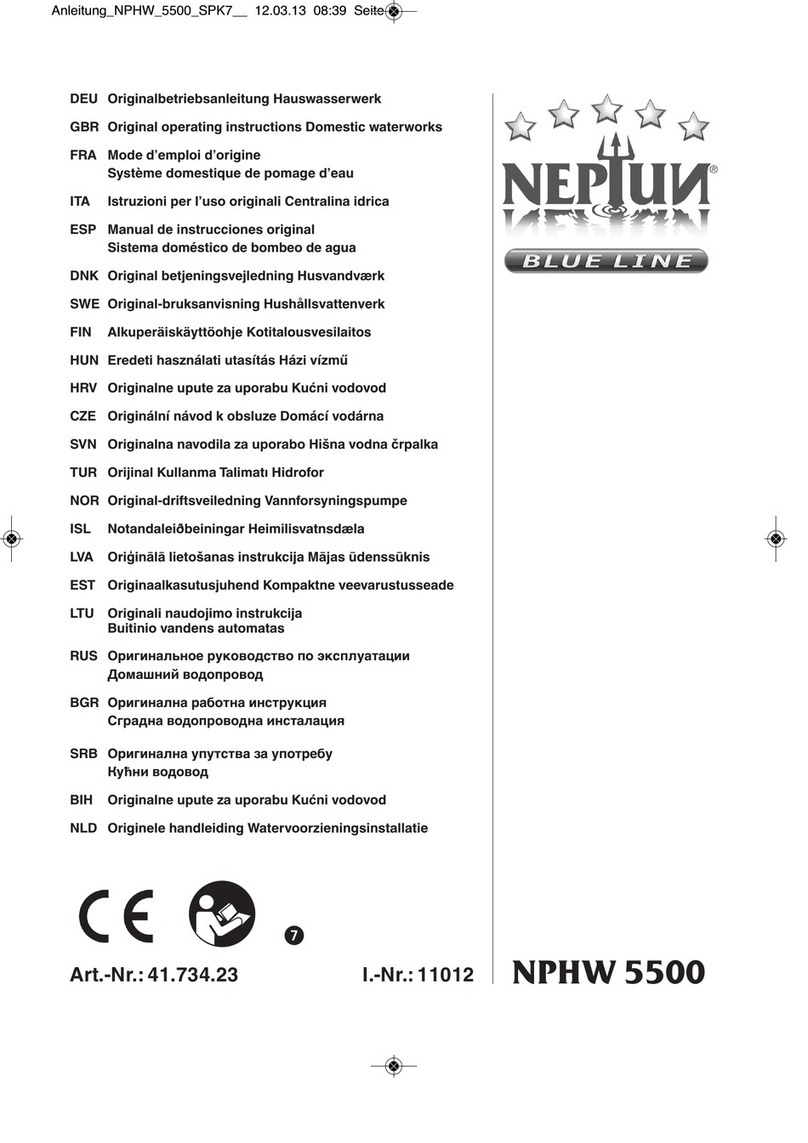
Installation/Operation Precautions
CAUTION: This pump should never be operated without liquid in the casing. It is recommended that run dry protection be used.
Optional electronic power monitors are available to help protect against run dry. If the pump has a PTFE or ceramic bushing, IT
CANNOT BE RUN DRY WITHOUT CAUSING DAMAGE TO THE PUMP. However, the pump can operate without liquid in the
casing if the pump has a carbon bushing. The exact length of time the pump can operate dry with a carbon bushing varies with
operating conditions and the environment.
CAUTION: Never start or operate with a closed suction valve. Never operate with a closed discharge valve.
CAUTION: Always provide adequate NPSHa (net positive suction head available). It is recommended to provide at least 2 feet
(61 cm) above the NPSHr (net positive suction head required).
CAUTION: If pump is used on variable speed drive, do not exceed the frequencey for which the pump was designed (for
example, if the pump is 50 Hz model, do not exceed 50 Hz).
Protection Control
A power monitor, ow switch, pressure switch or similar device must be used to protect against dry running, closed discharge
valve or decoupling. Any of these conditions could lead to a rise in surface temperature of the pump.
Construction Materials
Pump must be manufactured from PVDF with a PVDF motor adapter and bronze bump ring and have the designation “-A” in the
pump part number. The PVDF contains conductive carbon which allows it to be grounded when installed in a properly grounded
piping system or when a properly installed grounding strap is attached to a housing bolt. The bronze bump ring is pressed into the
clamp ring or motor adapter and prevents sparking should the motor bearings fail and the outer drive magnet runs out of round.
Grounding
Static sparking can cause an explosion. When operating in a hazardous area or pumping a hazardous uid the entire pump
system must be grounded to prevent static discharge. Before operating the pump, ensure the electrical continuity throughout the
pumping system and earth ground is 1 Ohm or less. If greater than 1 Ohm, re-check all grounding connections.
Elastomer Selection
Proper o-ring material must be chosen for the uid being pumped. Improper material selection could lead to swelling and be a
possible source of leaks. This is the responsibility of the end user.
Leaks
The pump must be checked for leaks on a regular basis. If leaks are noticed, the pump must be repaired or replaced immediately.
Temperature Classi cation
The surface temperature of the DB Series pumps depends upon the temperature of the uid that is being pumped. The following
chart lists different uid temperatures and the corresponding pump surface temperature.
Installation & Operation Instructions MTD-5, MTD-7-1/2, MTD-10
WARNING: Hot surfaces. This pump is capable of handling liquids with temperatures as high as 220º F (104º C). This may cause
the outer areas of the pump to become hot as well and could cause burns.
WARNING: Rotating Parts. This pump has components that rotate while in operation. Follow local safety standards for locking out the
motor from the power supply during maintenance or service.
WARNING: Chemical Hazard. This pump is used for transferring many types of potentially dangerous chemicals. Always wear
protective clothing, eye protection and follow standard safety procedures when handling corrosive or personally harmful materials.
Proper procedures should be followed for draining and decontaminating the pump before disassembly and inspection of the pump.
There may be small quantities of chemicals present during inspection.
WARNING: The pump and associated components are heavy. Failure to properly support the pump during lifting and movement
could result in serious injury or damage to the pump and components.
WARNING: Never run pump at less than minimum ow or with the discharge valve closed. This could lead to pump failure.
Fluid Temperature Max. Surface Temperature Temperature Class Max. Allowable Surface Temp.
29°C (85°F) 55°C (131°F) T6 85°C
77°C (170°F) 76°C (168°F) T5 100°C
104°C (220°F) 84°C (183°F) T4 135°C
3

